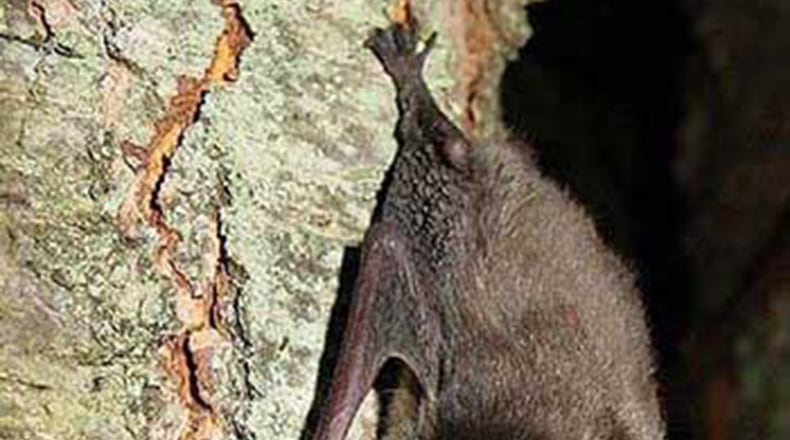“The bat was tested due to being in close proximity of two family dogs, the dogs were up to date on rabies vaccinations. The dogs were given rabies booster vaccinations and are in quarantine for 30 days as a precautionary measure,” Alicia Habermehl, public information officer for the health department, said Friday in an email.
“There was no bite to the dogs that we are aware of, testing was done as it was thought that the dogs could have been in close contact with the bat,” she added. “The dogs do not have rabies.”
There are no area reports of people bitten by a bat or having contracted rabies, according to Habermehl who declined to provide more exact information about where the bat was found.
"Bats are testing positive for rabies all across Ohio," Habermehl added. There have been 29 cases reported in Ohio this year. Two cases have been reported in Clark County, and one case has been reported in Darke County, according to the Ohio Department of Health.
This is the second report in Warren County in recent years, according to Duane Stansbury, the county’s health commissioner.
State law prevents health officials from specifying the location, but Stansbury said the location of the report was less significant due to the wide travel paths of bats: Everyone should be sure to get pets vaccinated for rabies and take other steps to prevent getting bitten by a bat.
This time of year, Stansbury said, bats are looking for areas in woodpiles and rotted trees to hibernate, creating another potential hazard for people with fireplaces or other wood-burning devices.
Rabies is a viral disease present in mammals that is most frequently transmitted through the bite of a rabid animal.
The virus acts by infecting the central nervous system and causing disease in the brain and subsequently, death.
Symptoms of rabies include fever, headache, and general weakness or discomfort early on and can progress to anxiety, confusion, hallucinations, hypersalivation, and hydrophobia.
Once the infection has progressed to this point death frequently occurs within days. Most (95 percent) of bats tested at the ODH Laboratory are negative for rabies.
“Although bats are very good for our environment, they also pose a potential risk to humans and pets. Thus, we are encouraging residents to take the precautionary measures listed in our media release to reduce the risk of rabies to residents, pets and other animals, “Habermehl added.
How to reduce risk of rabies infection
Keep household pets safe by:
- Ensuring that pets susceptible to rabies such as dogs, cats, and ferrets have their vaccinations up to date.
- Maintaining control of your pets by supervising dogs and keeping cats and ferrets indoors.
- Contacting animal control authorities to assist in the removal of stray animals from neighborhoods.
- Spaying or neutering your pets to prevent or reduce the number of unwanted pets that may not receive proper rabies vaccination.
Keep bats from getting into buildings by:
- Making sure windows have screens, chimneys are capped, and electrical and plumbing openings are plugged.
- Keeping unscreened doors or windows closed sealing all openings into the attic, basement, walls or occupied areas of the house that are larger than ½ inch by ½ inch. Use materials such as expanding spray-on foam, caulk, wire mesh, wood that fits tightly, steel wool (around pipes that enter buildings) or polypropylene bird netting to seal or cover gaps and holes.
Determine whether bats are already in a house by:
- Listening for squeaking noises coming from the attic, walls or elsewhere.
- Examining attic space, rafters, porches and walls for signs of roosting bats (e.g., evidence of bat guano and crystallized urine, or bare scratched areas on beams).
- Watching outside of the house at dusk to see if bats are flying out of the house to feed, or before dawn to see if bats are flying into the house to roost.
- Getting bats out of a house in which they are roosting or entering by:
- Using bat exclusion techniques instead of killing the bats. Killing or poisoning bats is seldom necessary or desirable.
- Sealing openings. Openings should not be sealed while bats are inside—this may drive them into occupied areas or create a sanitary problem when they die.
- Waiting to begin major home renovations and sealing in the winter when most bats have left buildings.
- Using special netting in a manner that allows bats to exit the house, but not to re-enter.
- Consulting with a licensed pest control expert specializing in bat.
For more information, visit www.wcchd.com.
Source: Warren County Combined Health District
About the Author

